Studia Papyrologica et Aegyptiaca Parisina (StudPAP) is dedicated to works in Greek, Latin or Coptic papyrology (editions or studies) or monographs on post-Pharaonic Egypt (mainly Byzantine or early Arab). This collection is supported by Jean-Luc Fournet's Written Culture in Late Antiquity and Byzantine Papyrology Chair (Collège de France), and is part of the publications of the Institute of Civilizations and History of Byzantium (UMR 8167).
Presentation
Publications
Studia Papyrologica et Aegyptiaca Parisina n° 7 | 2027
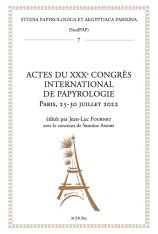
Jean-Luc Fournet (ed.) with the assistance of Y. Amory,
Proceedings of the XXXth International Papyrology Congress (Paris, July 25-30, 2022)
Every three years, papyrologists from around the world gather to announce new discoveries, present research programs or submit innovative approaches to their peers. The congress held in Paris in 2022 was the thirtieth of its kind - a high number that testifies to the maturity of a discipline that is, after all, relatively recent in the field of classical studies, but which, attentive to advances in new technologies and eager to publish unpublished papyri lying dormant in collections or unearthed in excavations, never ceases to renew itself. This volume brings together the proceedings, offering a valuable snapshot of the trends and contours of a discipline in perpetual motion.
After four plenarysession papers , which examine the evolution of papyrology and the directions it should take or avoid, the reader will find seventy-four contributions of a very varied nature: the presentation of new documentary and literary papyri and collections from Egypt or from Herculan papyrology, studies of institutional, social, religious and cultural history and historiography, linguistic and lexicographical refinements (particularly in the field of material culture), bibliological or paleographical investigations, reflections on the contribution of new technologies, and so on. All the languages spoken during the "papyrological millennium" are represented in this volume: Greek and Latin, of course, but also Demotic, Coptic and Arabic. From Hellenistic brigands to Xth-XIIIth century astronomy, from Roman horse care to Late Antique magic, these proceedings offer something to satisfy every curiosity and interest in a discipline that touches on so many fields.
Studia Papyrologica et Aegyptiaca Parisina n° 6 | 2025
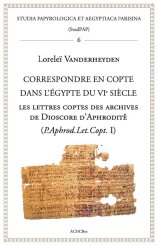
Loreleï Vanderheyden
Coptic correspondence in 6th-century Egypt. Coptic letters from the Aphroditê family archives (P.Aphrod.Let.Copt. I)
In recent years, renewed interest in the Dioscore archives of Aphroditê (Middle Egypt, 6th century AD) has brought the Coptic documents they contain out of the shadows. By providing new data in relation to the better-studied Greek component, they contribute to a better historical understanding of these bilingual archives. Moreover, as part of a predominantly Greek collection, they raise the question of the use and function of Coptic vis-à-vis Greek, the language of administration, in other words, the relationship between the national language of the Egyptians and that of Byzantine power.
This is the first annotated edition of a collection of twenty-one letters in Coptic from the archives of Dioscorus of Aphroditê, most of which have never been published before. A summary details the novelties present in these texts, notably in terms of toponymy, prosopography, and the administrative, social and fiscal history of the village - historical data likely to complement that provided by the Greek archives. A detailed study of the characteristically dialectal language coupled with material, palaeographic and formal aspects of the Coptic used in this region also enables an analysis of the relationship between the Greek and Coptic languages in a 6th-century village environment.
Studia Papyrologica et Aegyptiaca Parisina n° 5 | 2023

Valérie Schram
Trees and wood in Greco-Roman Egypt
A vast desert bisected by the Nile Valley, Egypt is certainly not one of those countries renowned for its forest resources. Yet, far from the clichés that make Egypt a massive importer of cedars from Lebanon, Greek documentation from its sands enables us to consider in a new light the importance of local tree species in the running of the country throughout the millennium covered by papyrological sources.
Bringing together ancient textual sources and archaeobotanical remains, the book presents the investigations that sought to restore the nature of these local essences under the veil of their names in Egyptian Greek. Through the snapshots of life provided by the papyri, it is possible to reconstruct, step by step, the place of these trees in the landscape, the resources allocated to their management by the authorities, the supplements provided by imports, and the ways in which the material was exploited to satisfy needs for timber, construction or fuel.
Studia Papyrologica et Aegyptiaca Parisina n° 4 | 2022
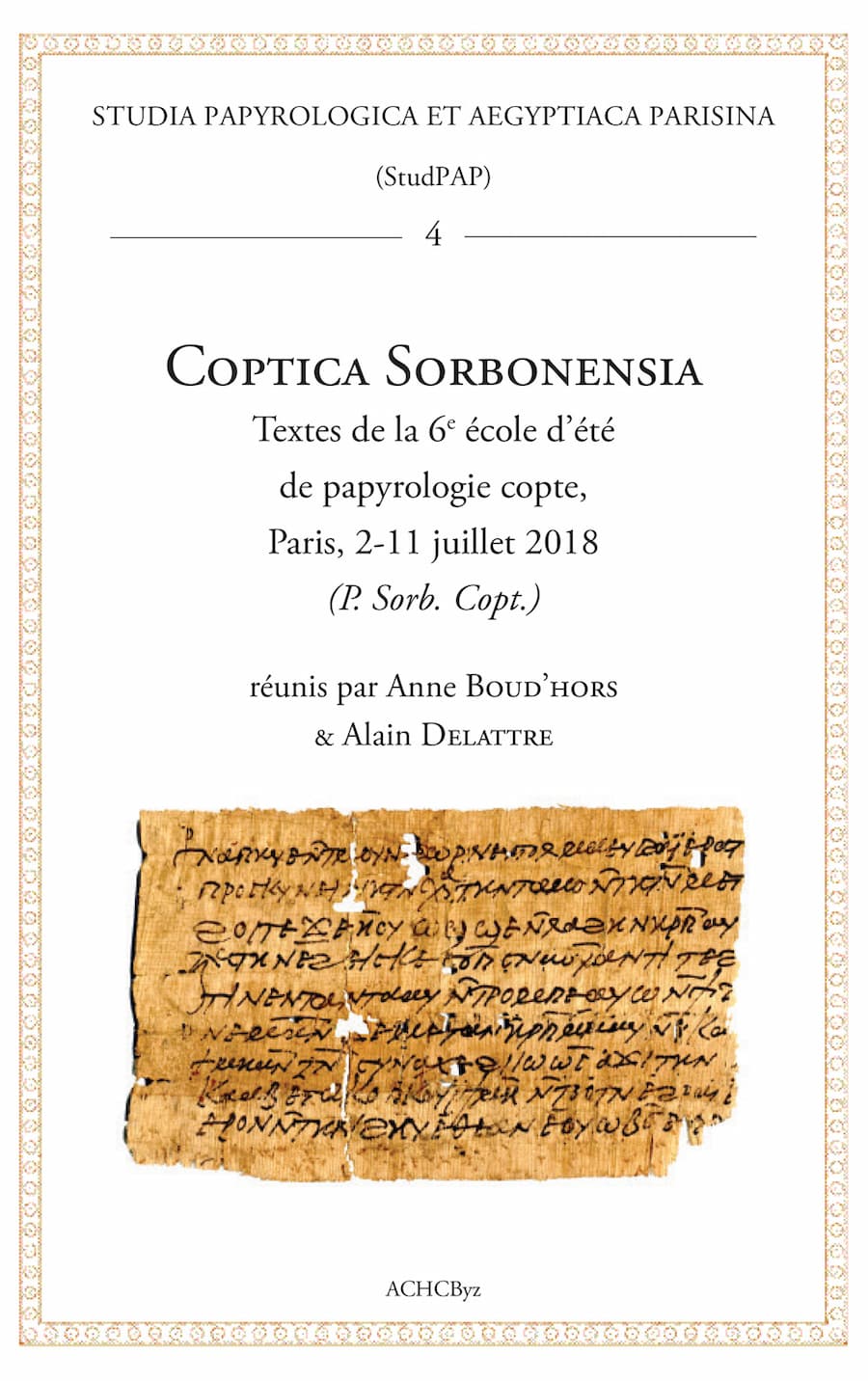
Coptica Sorbonensia
Texts from the 6thSummer School of Coptic Papyrology, Paris, July 2-11, 2018 (P. Sorb. Copt.) compiled by Anne Boud'hors & Alain Delattre
The collection of Coptic texts at the Sorbonne Papyrology Institute is rich in around one hundred and eighty items, illustrating various types of texts and covering a chronological arc from the ive to the twelfth centuries. The 6th Summer School of Coptic Papyrology (July 2018) provided an opportunity for participants to study a number of them, and this volume is the fruit of their labors. It contains annotated editions of forty-five texts, mostly documentary (legal deeds, accounting documents, letters), written on papyrus and ostraca, to which are added a biblical text and a magical text. In addition to the discovery of new documentary types or words attested for the first time, these documents help to flesh out certain monastic and village files from Middle Egypt (Apa Apollô monastery in Baouît, Apa Sabinos monastery, villages in the Hermopolitan nome).
Studia Papyrologica et Aegyptiaca Parisina n° 3 | 2022
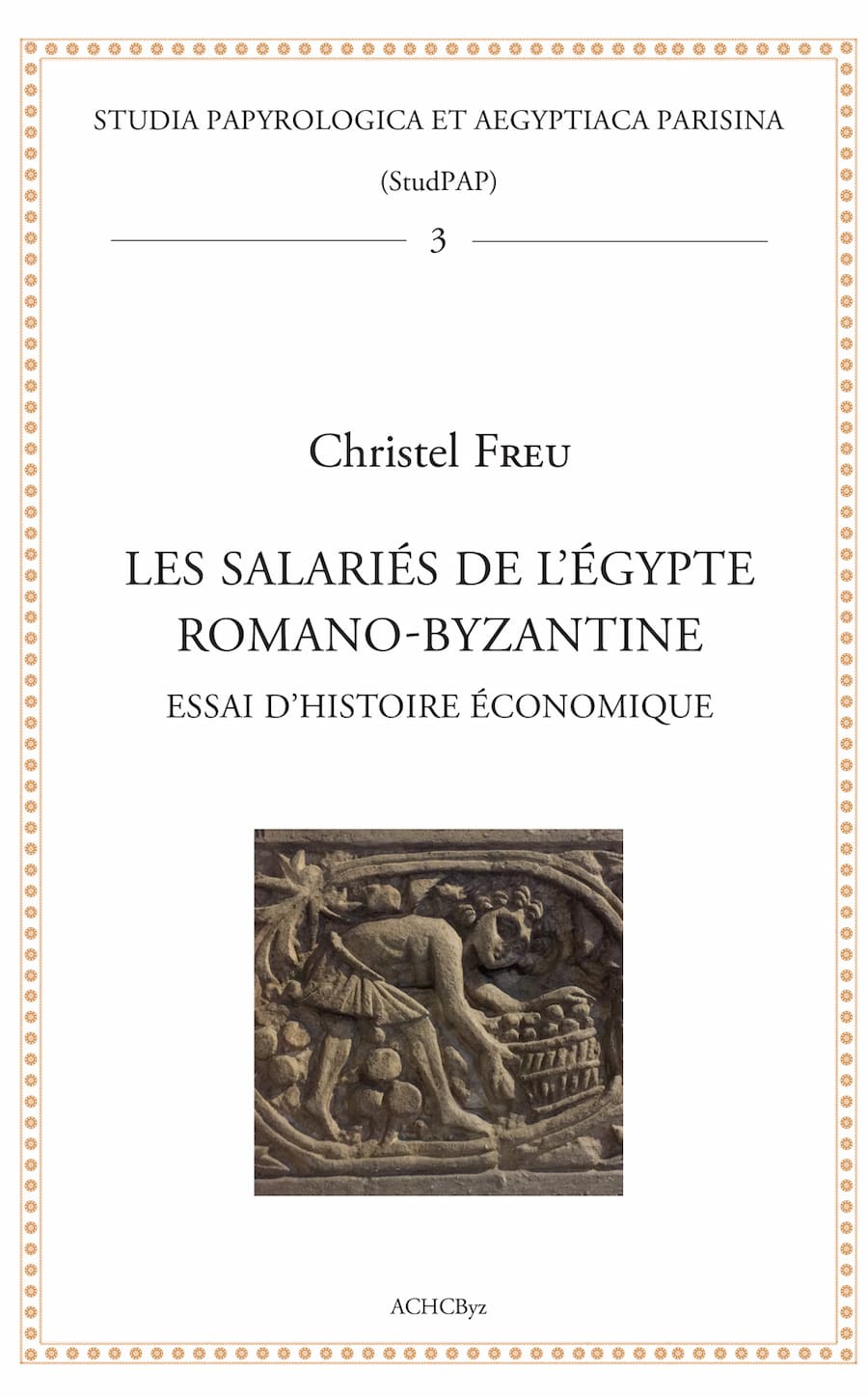
Christel Freu
Wage-earners in Romano-Byzantine Egypt : Essay on economic history
For a long time, ancient societies were described as slave societies, where the work of free men was marginal and only seasonal. Over the past generation, however, new research has nuanced this overly monolithic picture of ancient economies and societies: we now know that work was organized differently according to place and time. The present study therefore sets out to identify the traces of free salaried work in the society of Romano-Byzantine Egypt, whose papyrus documents have no equivalent in the rest of the ancient world. Employment contracts, accounting records, receipts and payment orders are re-read to identify the main areas and sectors of salaried employment. From the employment of domestic servants to work in workshops or on building sites, from transport services to irrigation networks, the traces collected finally outline the contours of a particular type of mercantile society, in which salaried employment was driven by urban and state demand.
Studia Papyrologica et Aegyptiaca Parisina n° 2 | 2021
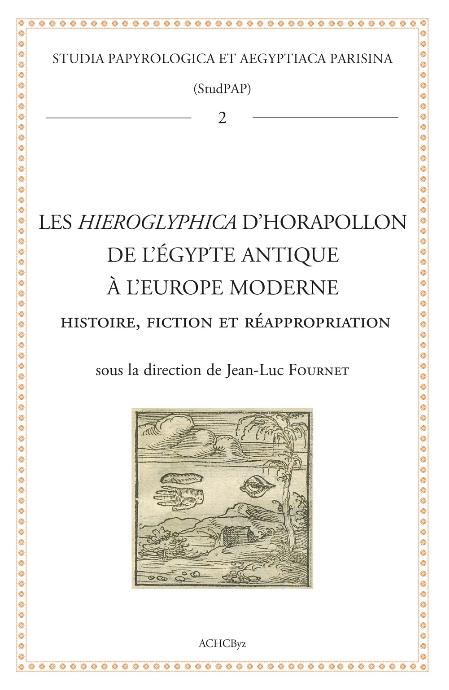
Jean-Luc Fournet (ed.)
Horapollon'sHieroglyphica fromancient Egypt to modern Europe: history,fiction and reappropriation
Horapollon is known as the author of a treatise on hieroglyphics(Hieroglyphica), the only one in Greco-Latin literature to have survived into modern times. Identified with the famous Alexandrian grammarian and philosopher of the5th century A.D., from a family of Greek intellectuals known for their militant paganism, Horapollon's work may have been one of the most eloquent testimonies to the last pagan attempts to resist Christianity, which had become the state religion, by combining the exaltation of a profane Hellenism with the defense of an endangered Pharaonic culture. This biculturality is at the heart of the Hieroglyphica: the value of more than half of the hieroglyphic signs Horapollon treats is confirmed by modern Egyptology, while the purely allegorical exegesis he gives is dependent on traditions specific to late Hellenism. Although this treatise, which since its rediscovery in 1419 has served as the basis for modern attempts to decipher the hieroglyphs, has led to nothing but dead ends and misunderstandings, it has had a profound influence on Renaissance symbolism and the vogue for emblematic literature.
The aim of this volume is to put an end to some of these misunderstandings and to place this work in its true light. It seeks to put the work back into the thick and complex context of its history, which has its roots in distant ancient Egypt and culminates in modern Europe, without ceasing to interweave Pharaonic and Greco-Roman traditions in a network that is sometimes difficult to untangle, before crystallizing the chimeras of a "hieroglyphilic" West.
Studia Papyrologica et Aegyptiaca Parisina n° 1 | 2020
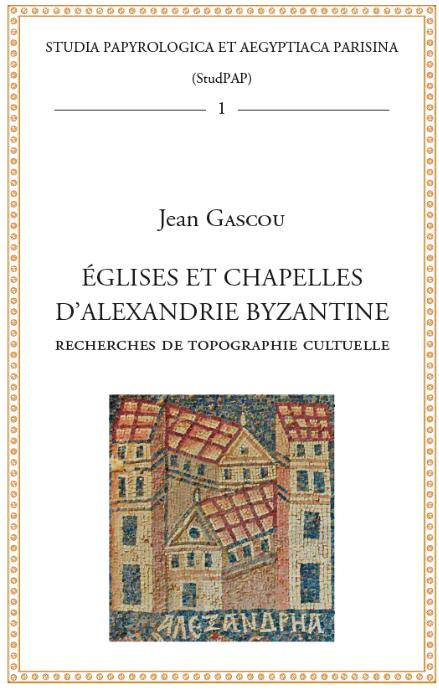
Jean Gascou
Churches and chapels in Byzantine Alexandria. Recherches de topographie cultuelle
Research into the Christian topography of Alexandria relies on Greek, Latin and Eastern literary sources. They are often legendary, contradictory and tendentious, even if they are not very explicit about their aims, and have sometimes led modern scholars astray. However, through comparison, literary analysis and textual commentary, we can draw some serious conclusions. This, at least, is what the present work aims to show, with the new locations it proposes. It also deals with the history of Alexandria's many Christian buildings and certain aspects of local Christian life.
